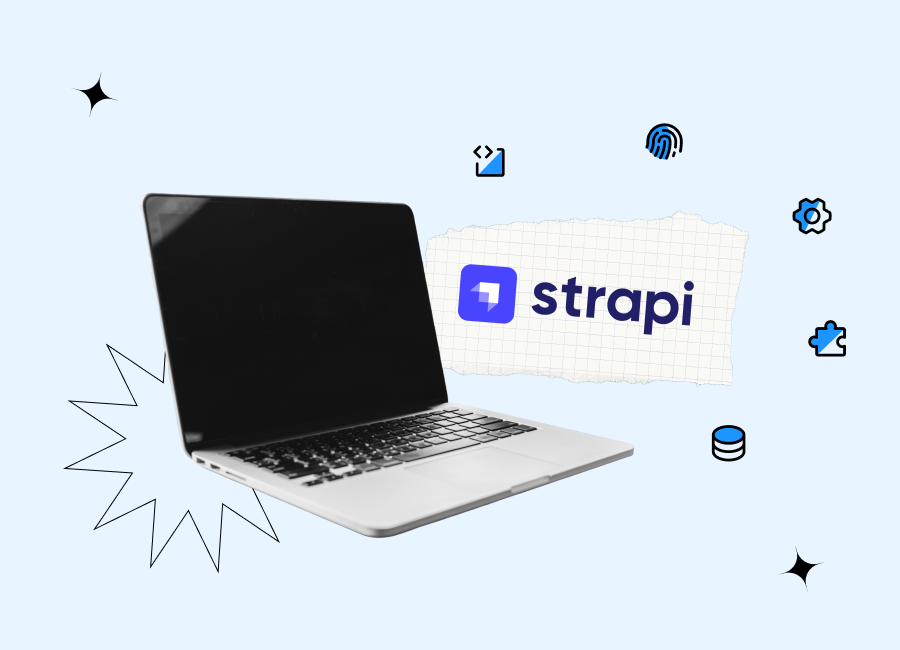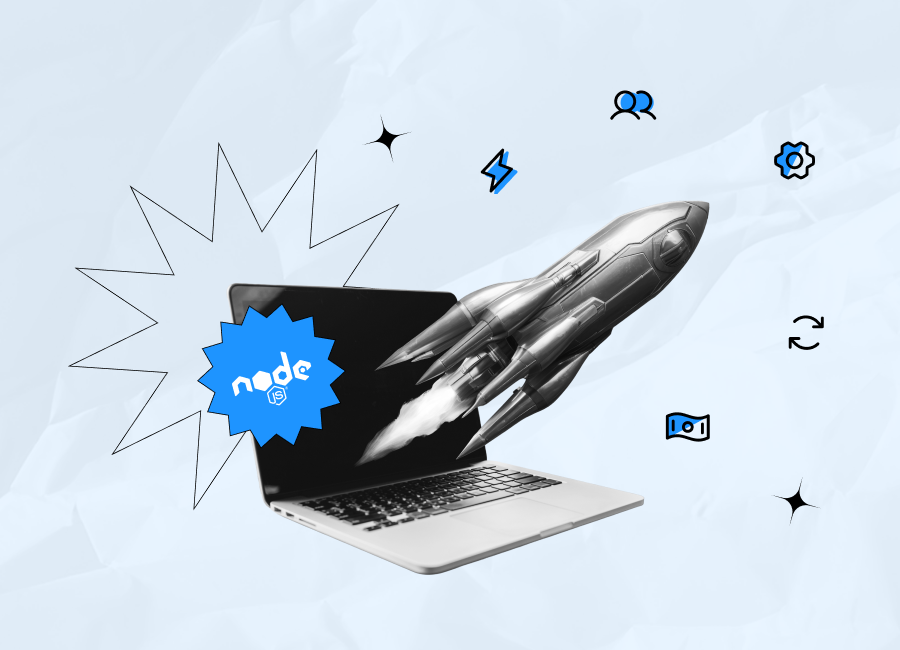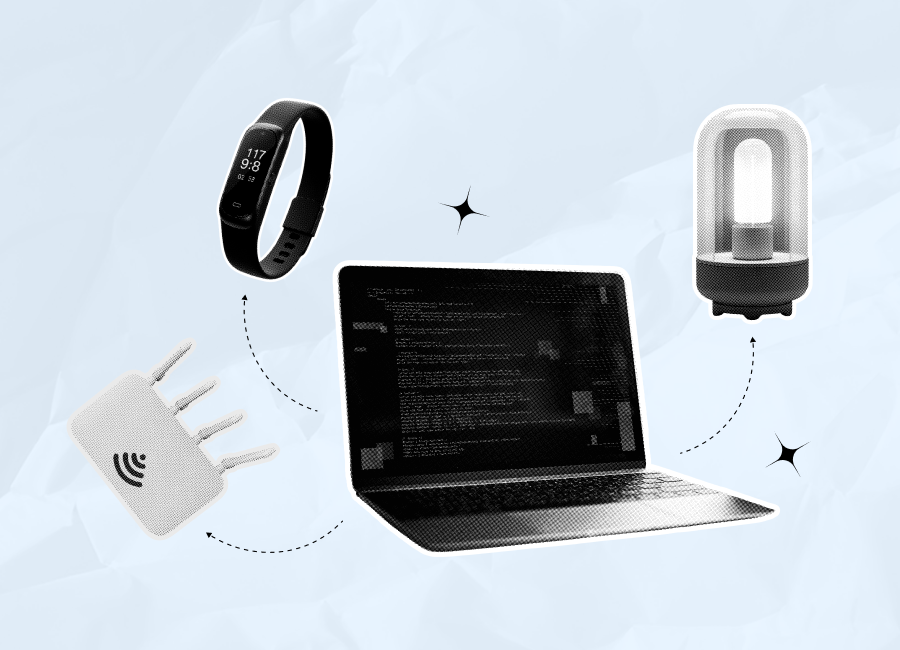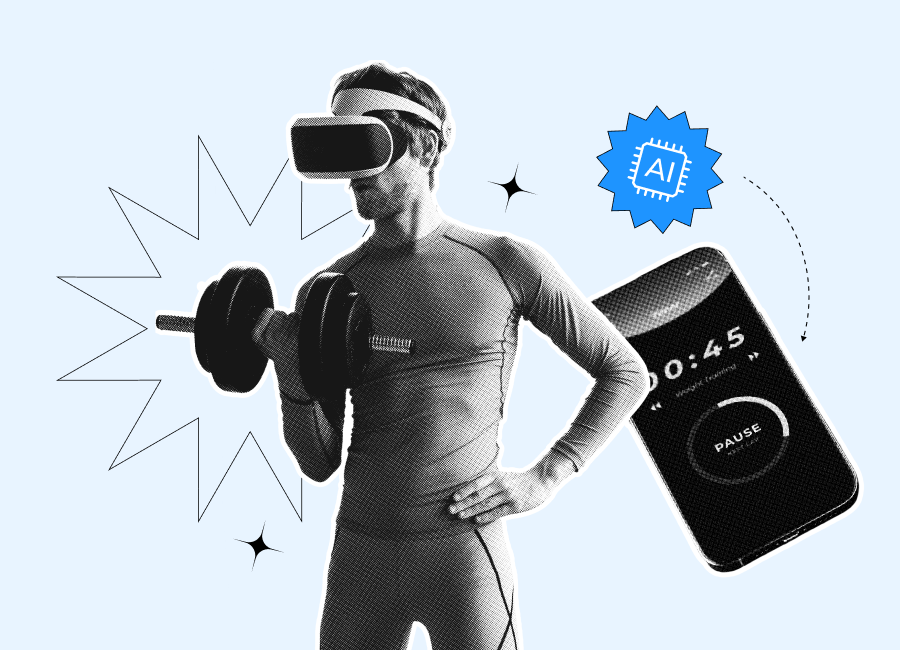In this article, we’ll help you decide whether your restaurant can benefit from a powerful mobile app and tell you everything you need to know about how you can create one. We’ve gathered opinions, tips, and real cases from our restaurant app development specialists and are ready to share all of that experience with you. Keep reading!
Why your restaurant needs a mobile app
It’s completely common to hesitate on whether you need a mobile app for your restaurant or not - after all, it’s a serious investment of time and money. At the same time, a well-made restaurant app will definitely bring the following benefits:

- Enhanced customer loyalty: Restaurant mobile app development tends to elevate customer loyalty to a new level, and this is not an exaggeration; apart from an overall positive user experience, the app can provide custom incentives like discounts or even freebies by monitoring customer behavior like their orders and spending habits, which boosts the chance of return visits and word-of-mouth recommendations.
- Easy delivery management: Integrating delivery into your app will not only allow customers to get easy access to your food but also enable you to effectively manage incoming delivery orders on the backend.
- Quick payments: Through the app, customers can safely and quickly pay for their meals without needing cash or credit cards; this makes the prospect of eating at your place more appealing as well as makes your finance management more straightforward.
- Effective marketing: A custom restaurant app will also enable you to quickly and effectively grab your customer base's attention by delivering them customized push notifications and promotions. With daily discounts, limited-time deals, or even future events, you can increase your sales during quiet times and better manage your revenue.
- User entertainment: Apart from its traditional utility, an app can be a source of fun for its users; you can keep customers engaged with interactive components like mini-games, quizzes, or interactive gamified screens. This not only increases the amount of time customers spend using the app, but it also makes user experience all the more special.
How to create a restaurant app: Step-by-step process
Now let’s look at how to create a restaurant app - In this section, we’re going to include the steps that both your business and a restaurant app development team will take to come from an idea to a fully functional product:

Step 1. Market research and decision making
It’s totally possible that your business is not yet ready for such an investment. First, figure out if you even have sufficient funds in your budget to commit to restaurant app development (read further for rough cost estimates). Then research the market environment and define the objectives of your restaurant app - it’s also essential before you start any development. Understand the preferences, behaviors, and pain points of your target audience; decide whether your app's main goal is to improve customer experience, streamline processes, or boost income. Finally, if you feel that you have enough resources and the return on investment will be favorable, it’s time to begin the restaurant app development process.
Step 2. Choosing a development team
Whilst forming an internal team is always an option, in the case of restaurant app developers it's recommended that you leave all the hard work to a professional outside team. Naturally, it’s preferable that they have previous successful experience of how to create a restaurant app, but it’s not the only factor to consider. Look at their other case studies, ask for certifications and other proof of competence, and get in touch with their past clients for feedback, if possible. And, of course, mind the pricing; the team should represent the best value for money from your point of view - don’t always go for the cheapest offers as they may not be of the highest quality.
Step 3. Business analysis - deciding on app features
Once you’ve made your choice on the restaurant mobile app development team, this is where they step in. During this phase, the team will work together with you to specify the main features your app will offer, how exactly it will achieve your goals, and how it will beat the competition. The team will roll out a comprehensive list of features and create user flow diagrams that illustrate how users will navigate the app and interact with it. The app design is then represented visually in wireframes, almost creating a simple interactive prototype. Once the project specification, timeline, and budget have been agreed on, it’s time to start the development.
Step 4. MVP development
During the Minimum Viable Product (MVP) development phase, emphasis is placed on creating the fundamental elements that give customers access to only the most basic functionality. Usually, the restaurant mobile app development team would start with functions like menu browsing, simple online ordering, delivery management, and table reservations. This is also the stage when the team creates all the backend architecture for managing data storage, user authentication, and database transactions. In the end, we get a functional product ready for testing.
Step 5. Initial release/target audience testing
During this stage, your existing customer base will engage with the app and provide feedback on its usability, functionality, and overall experience. The restaurant application development team will be taking all of that feedback on board so that the app can be improved in further iterations.
Step 6. Further improvements/Maintenance
Through user input, the dev team will find problems, flaws, or areas that need improvement and fix found flaws. They will also gradually introduce new features as you learn more about your audience and your app - these might consist of social network integration, geolocation-based services, personalized suggestions, or loyalty programs. After the product has been polished, the team will continue monitoring app performance, address new problems as they arise, and release updates that guarantee compatibility with new hardware and operating system iterations.
A powerful food delivery app - for your restaurant?
Brilliant idea! Our restaurant app development experts will help you attract more customers and make them your regulars!
Top features for a restaurant mobile app
When creating a mobile app, make sure it offers your customers these must-have features (in no particular order):
Interactive visual menu
A food delivery app without a menu would make as much sense as a taxi app without a map. An interactive visual menu is necessary for customers to browse through your offers, get more information on them and choose the preferred one(s). It helps when the restaurant menu app is supplemented by high-quality photos and thorough descriptions of each meal, containing ingredients, allergens and nutritional value. You also want to make the menu easily searchable by adding a search bar and a number of filters to help customers find what they need faster.
Making orders
Restaurant customers always appreciate time-saving opportunities and making an order in just a few taps is one of them. Online food ordering avoids the inconvenience of having to wait for your employee's attention at busy times, be it a waiter or a dispatcher. This way, you also increase your own efficiency and you will be able to serve more customers, which will result in faster table turns and more total income. Additionally, digital ordering usually creates chances for upselling and cross-selling by proposing related menu items or specials, which encourages clients to try more products on your menu.
Making table reservations
Similarly to order making, customers won't have to wait around for a long time if you let them reserve tables ahead of time and then use a QR code to confirm their identity once they come to the restaurant. This function helps your restaurant manage tables more effectively, allowing you to maximize seats and minimize empty tables during busy times. One more overlooked benefit is that reservation data offers restaurant owners insightful information about customer preferences and popular eating times, allowing them to more effectively organize staff schedules and inventory.
Online payments
Online payments have been a big part of our lives for many years now, and it’s expected that your restaurant offers them too. They, naturally, eliminate the need to carry cash or even cards, and reduce the human error factor down to zero, when dealing with payments. Customers are also more likely to return to an app that offers them a very simple and quick payment procedure - just make sure to use secure channels when setting up your payment system.
Order delivery
If your eatery doesn’t yet offer deliveries, you might want to change your mind. By including order delivery in both your restaurant’s and app's services, you can create new income streams and increase your user base outside of your immediate area. That was especially relevant during COVID-19 times, and it still remains the cornerstone of eating out (but not really eating out). Bad weather, office work, home parties - these are only a few situations that encourage people to use a food ordering app and you shouldn’t miss out.
Push notifications
This feature is a staple of any modern restaurant mobile app, and it will play multiple roles. You will want to have your users notified, for instance, when a courier is close to their location, or whenever you have a new special offer. On top of that, push notifications are great for reminding users about having something in their cart (uncompleted order) or introducing them to new items on your menu.
Loyalty programs
Having loyalty programs and specials create enduring connections with your customers and boost their retention rate. They will be naturally more motivated to prefer your restaurant over rivals when they feel rewarded for their frequent visits and spending. Free coffees, 2-for-1 offers, big discounts are only a few things you can try. And don’t forget that overtime you will be able to gather valuable data from these loyalty programs, enabling you to adjust promotions and services to match customer interest.
Geolocation-based features
This point combines multiple features, both for you and your customers. With GPS, you can leverage geolocation-based marketing, for instance - customer location data will assist in strategic decision-making for possible growth or focused marketing initiatives by pointing out areas with a high client density. At the same time, customers will also feel happier using your food delivery app when it provides them with useful location-based info such as order delivery time or your nearest restaurant.
Reviews and ratings
A review and rating system is a great source of user feedback, both positive and negative. Positive reviews and high ratings for your meals and specials increase credibility and trust, while negative opinions can be used as an area of improvement. On top of that, any restaurant will doubly benefit from negative reviews if you manage to show your customers examples of responding to their complaints and improving your service.
Gamification
Gamified aspects in your app can greatly increase user retention and make your platform feel more than just another food delivery app. You can encourage users to engage with your app more regularly and spend more time exploring your services by offering challenges, badges, or awards. Also, gamification is known to be particularly useful for persuading customers to try new dishes or take part in seasonal sales. Not to mention, completing challenges or earning awards gives people a sense of accomplishment that develops a stronger bond with your restaurant business.
Social media engagement
Last but not least, don’t forget to enable social media integrations in your app as they can be a potent marketing tool. You increase the organic exposure of your restaurant when you invite customers to share their dining experiences, favorite meals, or memorable events at your place. And you should pitch in as well - regularly interacting with customers on social media platforms increases your online presence and fosters a feeling of community.
How much does it cost to build a mobile app for a restaurant?
Anyone who knows how to create a restaurant app will tell you that the total cost of restaurant app development will depend on many factors. The most important ones include, but not limited to:
- App functionality/complexity
- Number of apps required (end user, admin variations)
- Usage of ready-made solutions
- UI/UX design preferences
- Number of integrations
- Adherence to the outlined development plan
To avoid massive overspending, we always recommend starting with an MVP - an app with the most basic functionality. This allows you to test how well your food delivery app will do among your existing and potential customer base and gather valuable feedback. From our mobile app development experience, the price for a high-quality MVP starts at $20,000.
Once the MVP has been tested and the results are encouraging, it will be a good time to improve the product with more powerful, sophisticated features and a more polished design. It’s common to perform these improvements in short sprints, testing one hypothesis after another with every iteration and remaining adaptable to user feedback. Overall, the total restaurant app development cost will greatly depend on how complex the new features are and how many iterations are required until the product is polished.
Please keep in mind that the above numbers are very tentative and are only meant to give you a very rough idea of expected costs. If you want to get a free quote with exact figures and a development timeline, don’t hesitate to reach out to us.
Development challenges
Any experienced restaurant app development team will do their best to mitigate any risks and give their end product every chance of succeeding. From our experience, these are the most common challenges that new apps face:
- Customer adoption: It may prove difficult to get your customers to install your app and use it regularly; use incentives and special offers to encourage new downloads.
- Staff adoption: Your staff will also take time to get used to the new way of running the restaurant; it's always a good idea to conduct intensive staff training before the app’s release.
- High competition: This is not a problem that is exclusive to restaurant apps, but still very relevant; to compete with industry giants and local eateries, try to find a special selling point that will set you apart - a very special dish or unique promo offers.
- Menu maintenance: a lot of restaurants have many items on their menu, and keeping all the information up to date may be hard; don’t forget to update names, ingredients, prices, and photos in your app as you make changes in your menu;.
- Dealing with negative reviews: It’s not uncommon for an app to gather a share of criticism at the MVP stage; the important thing here is to quickly respond to problems and show your customers that you’re actually acting on their negative feedback.
Our experience in restaurant app development
Cogniteq team is no stranger to restaurant app development - one of the most telling examples of our expertise is a platform called fullPlate. FullPlate was initially designed as a response to COVID-19, offering its user base a safe way of online food ordering from restaurants and having it delivered to their doorstep contact-free.
When we were approached by the client, they’d already had a product created for them by another app development company, but it hadn’t met their expectations. Our job was to conduct a total redesign of the app, add a functional admin dashboard, and improve the platform with many more strong features. Our end product consisted of two major parts: a B2B side designed for cafés and a B2C side for customers.

For the B2B side, we created a web app where restaurants can add descriptions, change menus and pricing, publish images and reviews, and manage user orders using real-time GPS data, among other things.
For the B2C side, we created a mobile app that allows users to view all nearby dining options and all the relevant information about these options by providing their current location. Then they can reserve a table, place an order, and select their chosen method of delivery, such as takeaway or no-contact home delivery.
The much-improved platform gained very positive feedback from test users and a select number of restaurants willing to sign up. The app has since been released on Google Play and App Store.
Final word
Restaurant app development is a costly, but extremely beneficial procedure. More engaged customers, more marketing capabilities, more streamlined processes - these are only a few positives that a well-made food delivery app will bring to your business.
That said, you need to do it right - conduct deep market research, consider your budgetary restraints, and, most importantly, choose the right restaurant mobile app development partner. With their help, you’ll be able to design and develop your first MVP, test it with your audience, and then improve it little by little through short iterations.
Make sure your dev team includes features like menu, delivery, ordering, payments, push notifications, table reservations, and more - as long as you’re not overextending your budget.
And speaking of the budget, if you’d like to get a free quote on the total cost and timeline of your, reach out to us. Our experience and expertise in restaurant app development will make your product fly.
FAQ
How does a mobile app help a restaurant business?
A top-quality mobile app can help a restaurant by making its customers more engaged and loyal, streamlining food delivery processes, expanding marketing capabilities, enabling easy instant payments for orders.
How to build a mobile app for a restaurant?
Restaurant mobile app development usually consists of the following stages: market research/budget allocation, development team vetting process, app technical specification and design creation, MVP development, user testing, further iterations, and app continual maintenance.










































